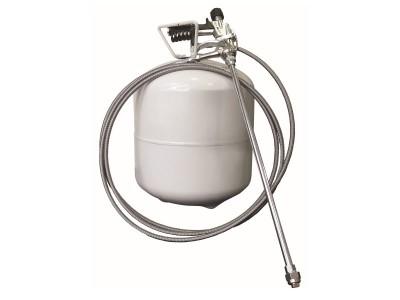How to transport canister adhesive and primer products
Published: 10 January 2022
Updated: 27 January 2022
This article explains the regulations for transporting your canister adhesive and primer products.

Roofing adhesive and primer canisters provide many benefits, including excellent coverage rates. Site trials have shown that one canister can be the equivalent of up to six 6L tins of adhesive˟, reducing the number of containers needed to be transported and stored onsite.

This article explains the regulations for transporting your canister adhesive and primer products.
Risk Assessment
There is a duty to carry out a risk assessment for any activity for people at work. A simple risk assessment should therefore be conducted on the act of carrying, unloading, loading and transporting products to ensure all activities are carried out safely.
Transporting Adhesives & Primers – ADR Regulations
ADR is the European agreement regarding the international transport of Dangerous Goods by Road (ADR). It provides guidance on the transport of products classified as ‘dangerous goods’ – applying to all goods containing hazardous properties, including most household cleaning products and paint, as well as adhesives and primers, both traditional tin-applied products and spray-applied canisters.
For those driving a vehicle carrying a large quantity of ‘dangerous goods’, they must have an ADR license and adhere to specific outlined requirements. Many haulage companies will provide ADR transport.
There is a ‘small load threshold limit’ of up to 333L for flammable and 1000L for non-flammable products, which removes many of the ADR requirements. Drivers do not require an ADR license if they are transporting an amount of product under this threshold. However, drivers should still:
- have knowledge of the safe handling and associated hazards with the transportation of the type of product, as well as an understanding of how the ADR regulations work.
- carry a 2kg dry powder fire extinguisher.
- stow the dangerous goods properly.
The actual amount that both ADR-trained and non-trained drivers can transport will depend on their insurance policy. Please consult your insurance policy before transporting any amount of ‘dangerous goods’.
Transporting Canister Products
The ‘small load threshold limit’ means that drivers without an ADR license can transport up to approx. 15 flammable canisters or 45 non-flammable canisters at any one time. For mixed loads, please refer to the ADR regulations.
Vehicles used to transport the canisters should be open (preferred) or have adequate ventilation. The goods must be appropriately labelled and secured within the vehicle, with precautions taken to prevent any leakage.
The driver must also have details of the hazards associated with their dangerous goods loads, available on the Material Safety Data Sheet (MSDS), as well as written instructions on the emergency action to take if an accident occurs.
It is the responsibility of the driver who is carrying the dangerous goods load to ensure they are complying with the regulations.
Please seek advice from Apollo Roofing if you need any further information or consult the Road Haulage Association for a list of haulage companies.
˟ InsuBond Solvent-Free Insulation Adhesive vs InsuBond Spray-Applied Insulation Adhesive
Our infographic below summarises the key points:

You may also be interested in
Sign up to our newsletter to get our blogs delivered straight to your inbox
This form is protected by reCAPTCHA and the Google Privacy Policy and Terms of Service apply.







